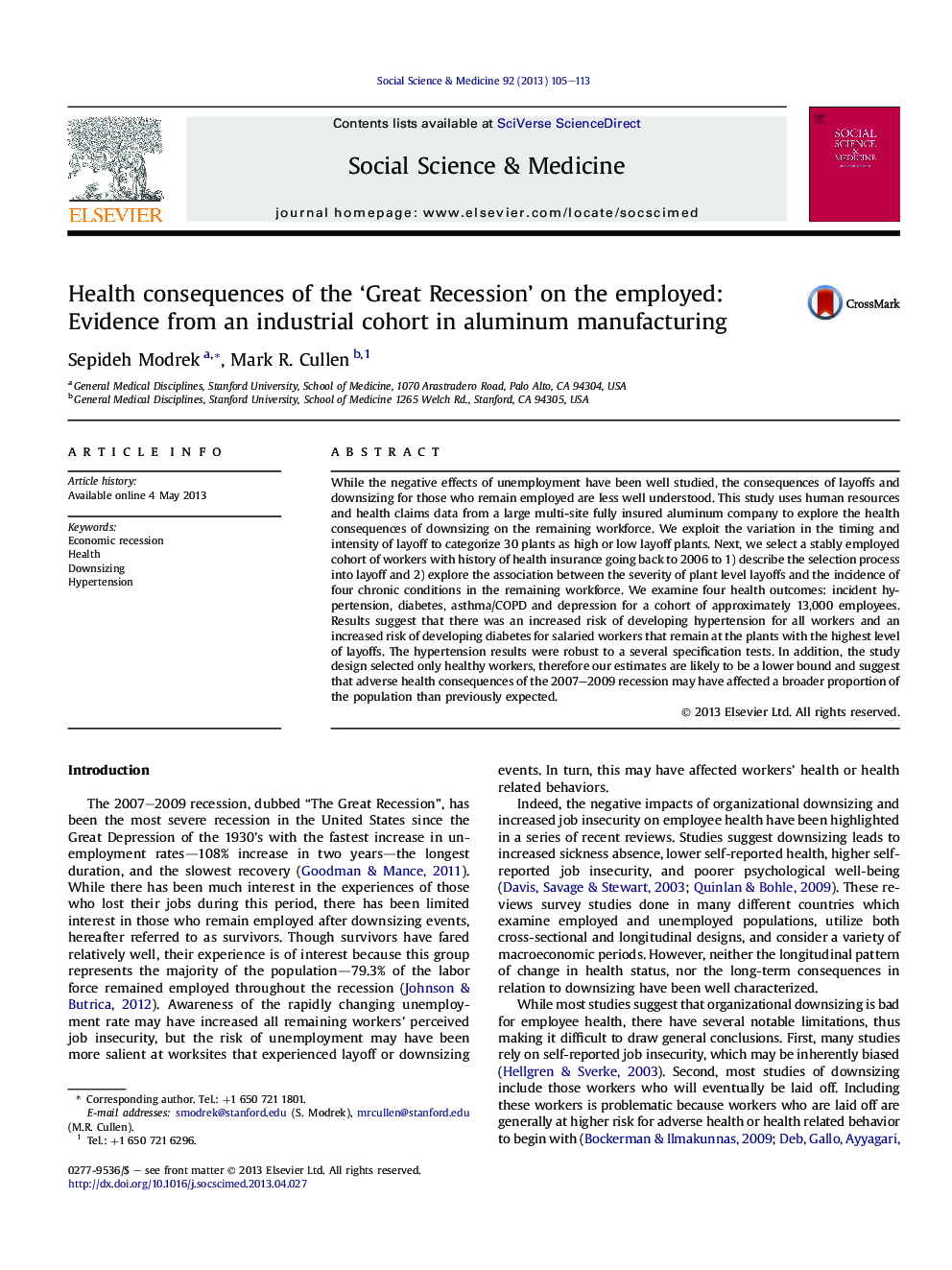| Article ID | Journal | Published Year | Pages | File Type |
|---|---|---|---|---|
| 7337023 | Social Science & Medicine | 2013 | 9 Pages |
Abstract
While the negative effects of unemployment have been well studied, the consequences of layoffs and downsizing for those who remain employed are less well understood. This study uses human resources and health claims data from a large multi-site fully insured aluminum company to explore the health consequences of downsizing on the remaining workforce. We exploit the variation in the timing and intensity of layoff to categorize 30 plants as high or low layoff plants. Next, we select a stably employed cohort of workers with history of health insurance going back to 2006 to 1) describe the selection process into layoff and 2) explore the association between the severity of plant level layoffs and the incidence of four chronic conditions in the remaining workforce. We examine four health outcomes: incident hypertension, diabetes, asthma/COPD and depression for a cohort of approximately 13,000 employees. Results suggest that there was an increased risk of developing hypertension for all workers and an increased risk of developing diabetes for salaried workers that remain at the plants with the highest level of layoffs. The hypertension results were robust to a several specification tests. In addition, the study design selected only healthy workers, therefore our estimates are likely to be a lower bound and suggest that adverse health consequences of the 2007-2009 recession may have affected a broader proportion of the population than previously expected.
Related Topics
Health Sciences
Medicine and Dentistry
Public Health and Health Policy
Authors
Sepideh Modrek, Mark R. Cullen,
